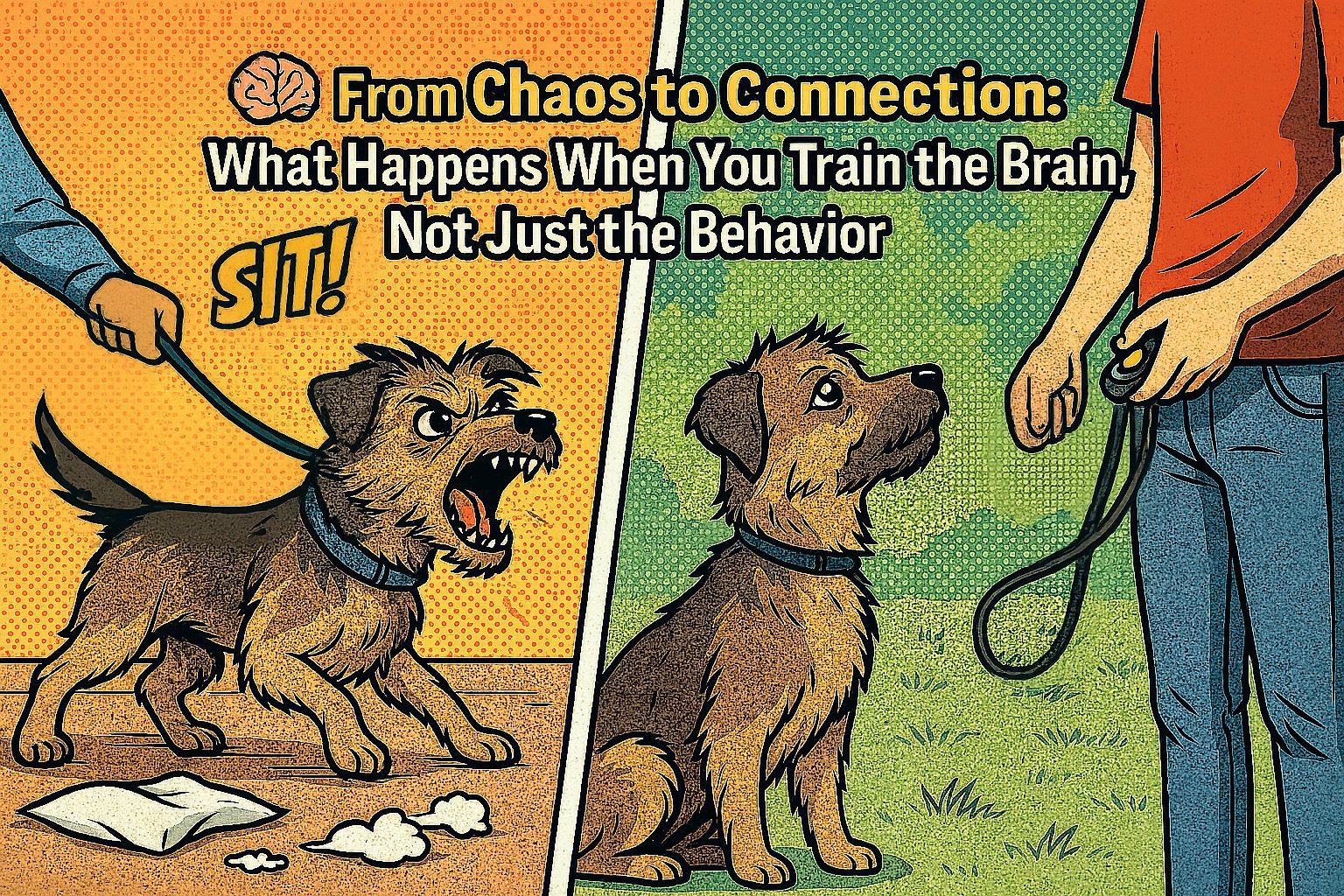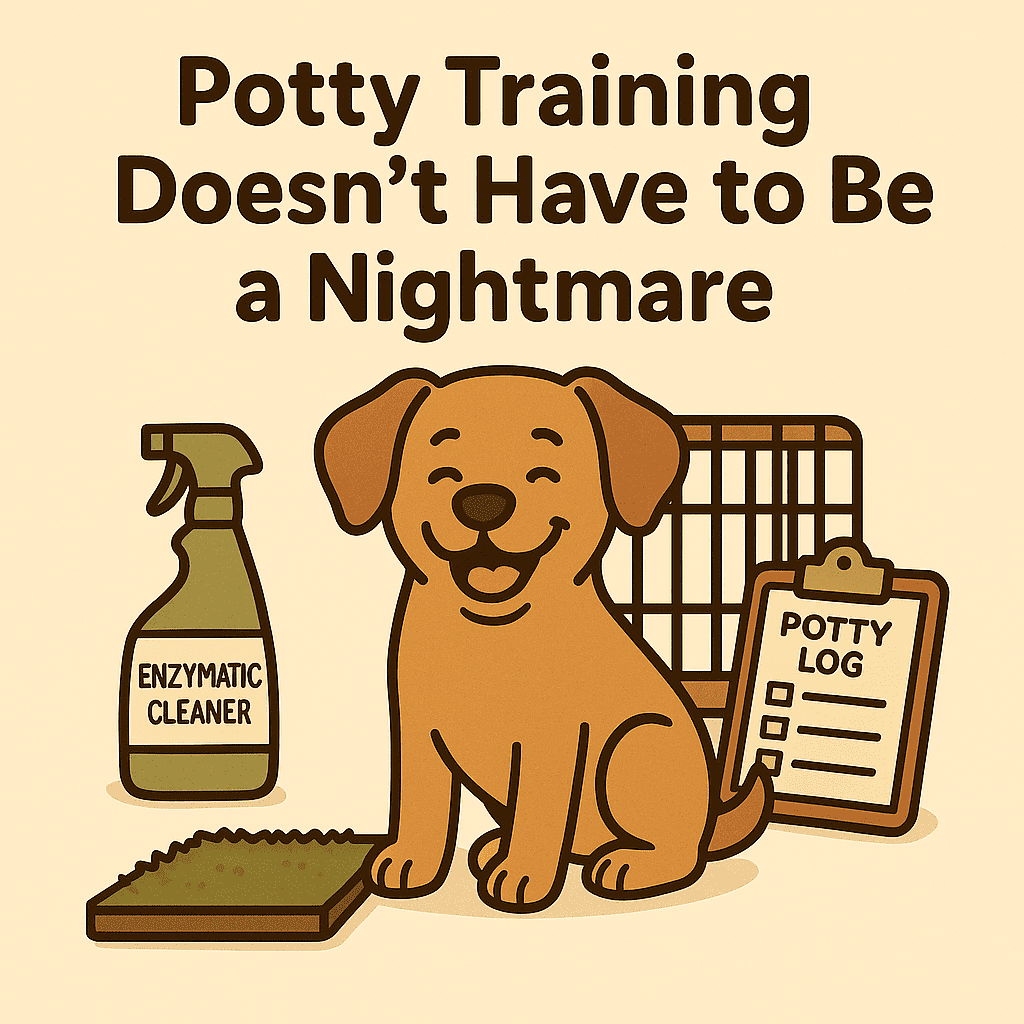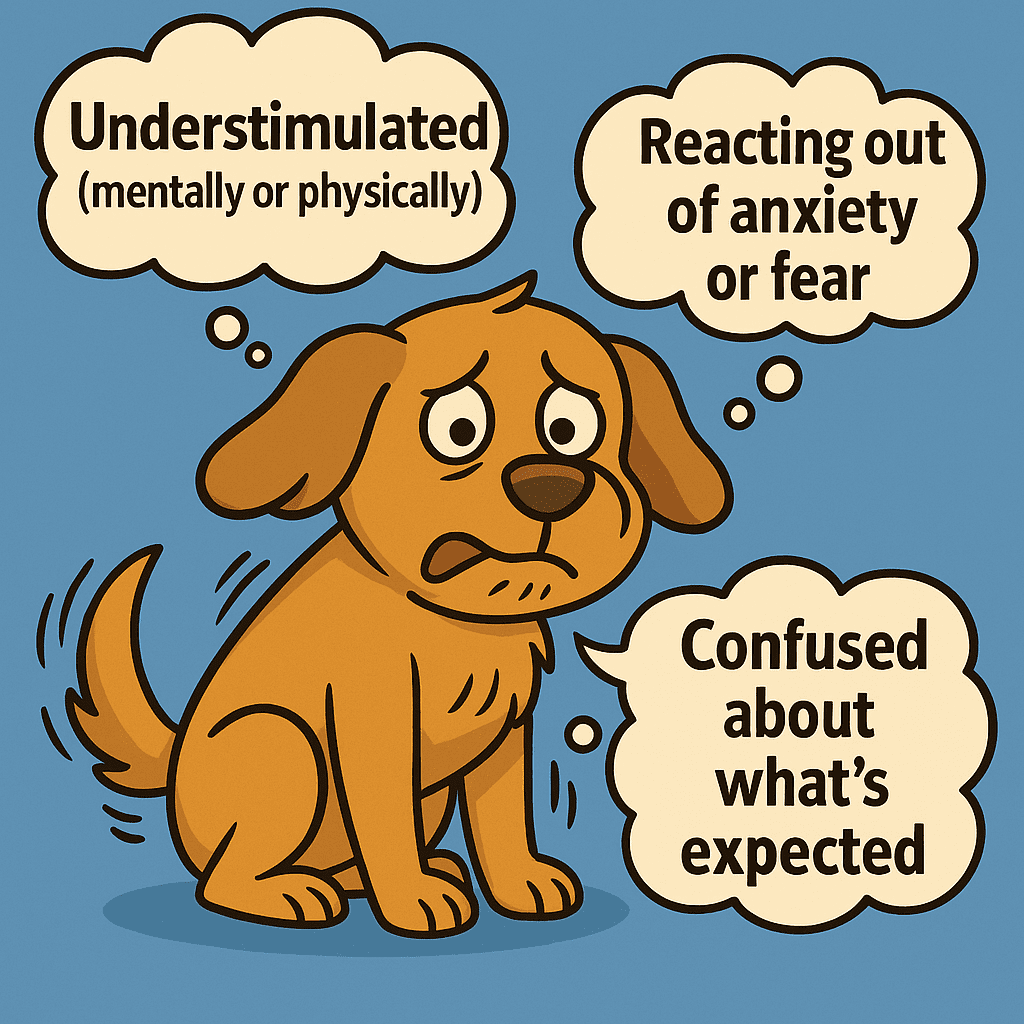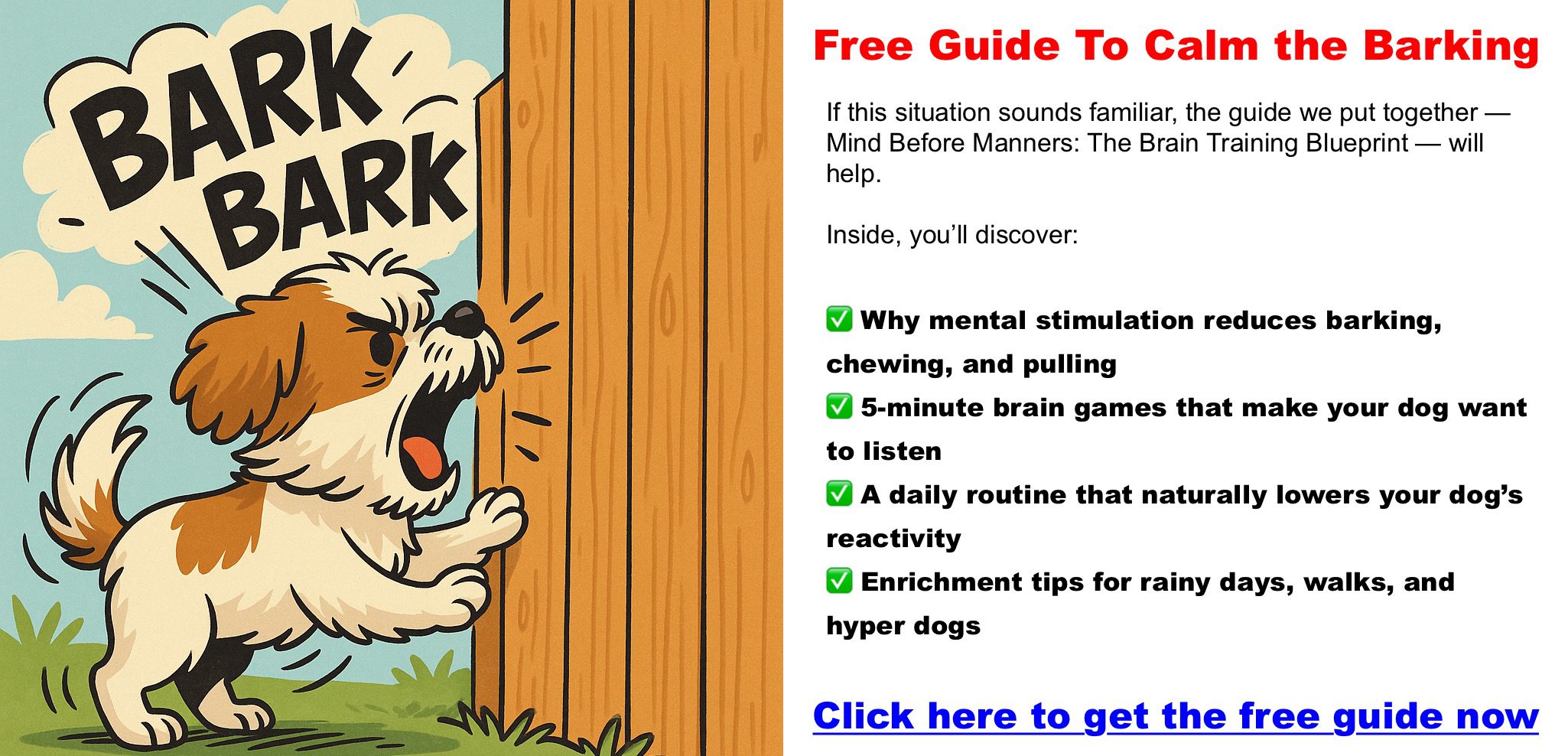admin
Why Focus Matters: More Than Just Eye Contact
Focus is your dog’s mental GPS—it helps them navigate through chaos, distractions, and tempting squirrels, and bring their attention back to what matters: you. Whether you’re working on leash training, polite greetings, or recall, building laser-sharp focus is the foundation for all other behavior improvements. Without it, commands fall on deaf ears; with it, even a high-energy pup can become responsive and attentive.
Getting Started: Before You Play
Before diving into the games, set yourself—and your dog—up for success. Here’s what you’ll need in your homemade Focus Toolkit:
- High-value treats (soft, smelly, bite-sized)
- A clicker (optional but helpful for precise marking)
- A favorite toy (for dogs who are play-driven)
- Scent items (e.g., a sock or cloth you’ve handled for search games)
Pair training sessions with meal times and you’ll build consistency and avoid overfeeding. One of the easiest lifestyle hacks is to use your dog’s regular food as a training treat, especially for games that require multiple repetitions.
10 Focus Games to Strengthen Attention
1. Name It & Claim It
Level: Beginner
Teach your dog that hearing their name means “look at me.” Start in a quiet space and say their name once. The moment they look at you, mark it (with a click or “yes!”) and reward.
- Goal: Get instant attention every time you say their name.
- Progress Marker: Your dog starts making eye contact before you reward them.
2. Look at That (LAT)
Level: Intermediate
This counter-conditioning game helps reactive or easily distracted dogs refocus. When your dog sees a distraction (like another dog), mark and treat when they notice but don’t react—they’ll begin to look to you instead of react at it.
- Goal: Build automatic check-ins when distractions appear.
- Progress Marker: Your dog glances at the trigger and looks right back at you.
3. The Cup Game
Level: Beginner to Intermediate
Hide a treat under one of three opaque cups and shuffle. Let your dog sniff and choose. This builds scenting skills and impulse control while keeping their brain engaged.
- Supplies: 3 cups, treats
- Progress Marker: Dog waits until given a cue to make a choice.
4. Find It!
Level: Beginner to Advanced
Toss a treat a few feet away and say “Find it!” Great for redirecting overstimulated dogs and improving focus post-arousal. Make it harder by hiding treats around the room.
- Goal: Build scenting confidence to calm overstimulation.
- Progress Marker: Dog starts scanning the environment calmly after hearing the phrase.
5. Touch Target
Level: Beginner
Hold your palm out and train your dog to touch it with their nose. It’s simple, fast to teach, and excellent for redirecting focus on walks or around guests.
- Use: Directional control, polite greetings, heeling
- Progress Marker: Dog eagerly taps hand from any position
6. Place Game
Level: Intermediate
Teach your dog to go to a mat or bed and stay until released. Helps build duration focus and self-control. Use it during meals, doorbell rings, or chill time.
- Progress Marker: Holding the “place” command for 2+ minutes with mild distractions.
7. Leave It, Take It
Level: Intermediate to Advanced
This teaches impulse control. Show your dog a treat, say “Leave it,” then reward with a different one when they back off. Eventually, they’ll ignore the temptation until invited.
- Goal: Help your dog make better choices independently.
- Progress Marker: Dog leaves dropped food or objects without being told.
8. Pattern Games (1-2-3 Treat, Up/Down)
Level: Beginner to Intermediate
These predictable routines reduce anxiety and improve engagement. In “1-2-3 treat,” count aloud and give a treat on 3. In “Up/Down,” walk a few steps, stop, ask for eye contact, then reward.
- Best Use: For anxious or reactive dogs in overstimulating settings.
9. Obedience Games with a Twist
Level: Advanced
Combine sit, down, stay, and come with obstacle distractions (e.g., a toy tossed nearby). Reinforces focus even when other urges kick in.
- Progress Marker: Dog performs commands in unfamiliar, distracting environments.
10. Zen Bowl
Level: Intermediate
A quiet but powerful game: place a treat in a visible bowl on the ground. Reward your dog only when they look away from the bowl and back at you. Build their ability to disengage from temptation and re-engage with you.
- Goal: Inspire autonomous focus decisions
Sample Weekly Focus Game Schedule
Here’s a suggested routine to weave focus-building into daily life:
| Day | Game | When to Play |
|---|---|---|
| Monday | Name Game + Touch Target | Before breakfast, short leash walk |
| Tuesday | Cup Game + LAT | Afternoon enrichment indoors |
| Wednesday | Find It + Pattern Game | Evening backyard calm-down |
| Thursday | Leave It + Place Game | Before dinner, company arrives |
| Friday | Obedience Game + Touch | On walks in higher-distraction areas |
| Saturday | Zen Bowl + Look at That | Field trip to park (short sessions) |
| Sunday | Free play or repeat favorites | Use natural interactions as training |
What You’ll See With Consistency
Practice these games consistently, and by week two you may notice:
- Your dog checks in with you automatically during walks
- They hesitate before lunging at distractions
- They settle faster after being excited
These are huge indicators that your dog’s internal compass is recalibrating toward you.
Final Tip: Make Focus a Lifestyle
Beyond structured games, use daily moments—waiting at doors, feeding times, leash clips—as micro-opportunities to build attention. A focus-trained dog isn’t just well-behaved—they’re tuned into you like their favorite podcast. And that’s the real magic.
Yelling Didn’t Work. Treats Didn’t Work. This Did.
That heart-stopping moment when your dog bolts toward traffic despite your screams…
The embarrassment when guests are greeted by a barking tornado of paws and teeth…
The slow-burn frustration of repeating ’sit… SIT… SIT!’ until you’re hoarse.
If you’re like I was with my rescue terrier Penny, you’ve probably:
- Tried every YouTube tutorial
- Bought fancy gear (“Maybe this beeping collar will work?”)
- Blamed yourself (“Am I just bad at this?”)
Here’s the uncomfortable truth: Traditional obedience training often makes ignoring you WORSE.
But after nearly losing Penny when she chased a squirrel across the street, I discovered a neuroscience-backed approach that transformed her from selective listener to focused partner in just 3 weeks.
No shock collars. No dominance nonsense.
And it starts with understanding why your dog ‘tunes you out’…
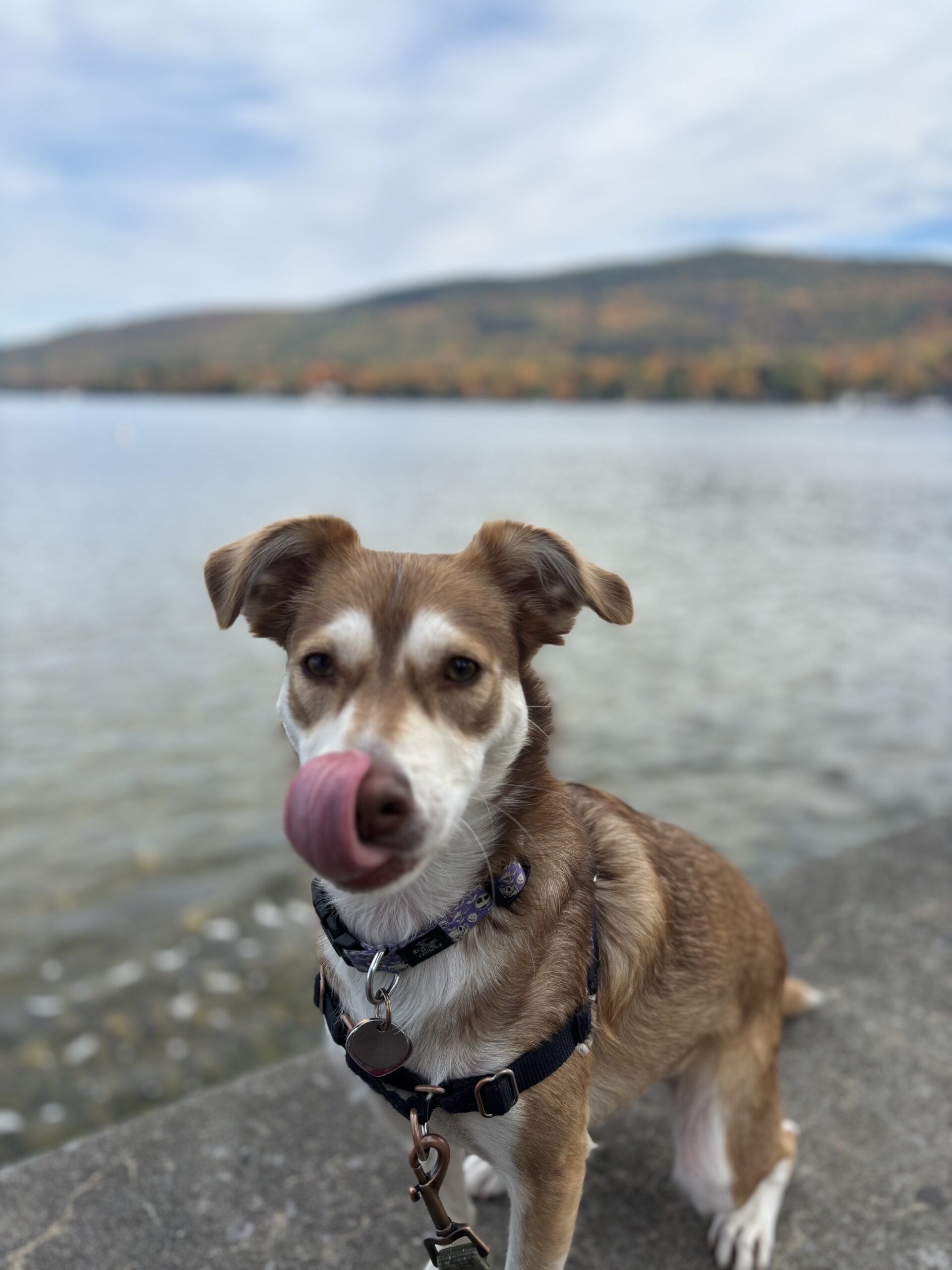
My dad said, “She’s cute, but she doesn’t listen.”
Learn More About Fixing Behavior: Brain Training 4 Dogs
Why Your Smart Dog Plays Dumb
The 3 Training Myths Keeping You Stuck
The Repetition Trap
When you repeat commands (“come… COME… COOOOME!”), you teach your dog they don’t need to listen the first time.
The Treat Bribe Failure
If treats only appear after you’ve begged 5x, you’re rewarding disobedience—not focus.
The “Willpower” Misconception
Dogs don’t ‘choose’ to ignore you. Their brains literally lack the pathways to prioritize your voice over distractions… until now.
How Harvard Research Rewires “Ignore Mode” Dogs
Neuroscientists proved dogs’ brains adapt faster than humans’ (Harvard Medical School neuroplasticity studies). This means we can literally rebuild their focus circuitry—but only through specific game-based triggers.
The breakthrough? Training that looks like play:
- 5-minute “focus sprints” that lock attention better than 30-minute drills
- Confidence-building puzzles that eliminate anxiety-based barking
- Impulse control games that stop door-dashing and leash pulling
I tested this with Penny using a program developed by a trainer who helped rehabilitate military K9s. The results shocked me…
The “Brain Training” System That Finally Worked
After wasting $1,200 on trainers who made Penny more anxious, I found Adrienne Farricelli’s Brain Training for Dogs. As a certified behaviorist (CPDT-KA) with 15+ years’ experience, her approach is radically different:
✅ NOT obedience drilling → Short daily games like “Treasure Hunt” and “Bottle Game”
✅ NOT treat-bribing → Builds intrinsic calmness and real-world engagement
✅ NOT a quick fix → But measurable progress in 21 days
Why this worked when others failed:
- Modular design: Start with preschool-level focus builders (no prior skills needed)
- Distraction-proofing: Gradually adds real-world triggers (doorbells, squirrels, kids)
- Anxiety reduction: 73% of users report calmer behavior by week 2
This Retrains Your Dog To Listen: Brain Training 4 Dogs
Real Results From the Program’s Private Forum
🐕 “After 3 weeks of the ‘Look at That’ game, my reactive GSD stopped lunging at skateboards. Life-changing!” – Lisa R.
🐾 “My deaf senior dog learned complex hand signals through the ‘Shell Game’ – now he ‘checks in’ constantly!” – Mark T.
🦴 “Used Module 3 to stop counter-surfing. My food thief now waits calmly when I leave the kitchen!” – Priya K.
Is This Just Another Scam?
I was skeptical too. Here’s my brutal take after finishing the program:
👍 WORTH IT IF:
- You’ll commit to 10 mins/day
- Your dog has common issues (barking, pulling, ignoring)
- You prefer force-free methods
👎 SKIP IF:
- You need 1-on-1 coaching (it’s self-paced)
- Your dog has severe aggression (consult a behaviorist)
- You want overnight miracles
Pro tip: The price beats one in-person session – in fact I was appalled to learn that the local trainer charged big money for a 15 minute session. The 60-day refund guarantee sealed it for me—but Penny’s transformation made it irrelevant.
After 6 Failed Training Attempts, I Nearly Gave Up. Today?
- Penny heels off-leash past squirrels
- Comes instantly when called (even from sleep)
- Chooses to “check in” constantly by locking eyes with me
This isn’t obedience. It’s a genuine partnership.
If you’re ready to:
- Stop feeling ignored & embarrassed
- Build unshakeable focus (even around distractions)
- Actually enjoy training with science-backed games…
👉 Discover The Hidden Key to Fixing Your Dog’s Behavior
10 Potty Training Fixes You Can Try Today (Before You Call a Trainer)
Is your dog still having accidents? Whether it’s a puppy who just doesn’t get it or an older rescue that’s never been trained, potty issues are one of the most frustrating problems a dog owner can face.
But here’s the truth: most dogs aren’t being defiant — they’re confused, unstructured, or misunderstood. And before you shell out hundreds for a trainer, you can try these 10 proven strategies grounded in science and real-world experience.
 Click Here to See the Step-by-Step Potty Plan That’s Helping Dog Owners Finally Get Results
Click Here to See the Step-by-Step Potty Plan That’s Helping Dog Owners Finally Get Results
1. Create a Rock-Solid Routine
Feed, walk, and let your dog out at the same times every single day.
Why it works: Dogs thrive on predictability. A consistent routine regulates their system and helps them learn when and where to go.
2. Use a Properly Sized Crate
Your dog’s crate should be just big enough to stand, turn, and lie down — no bigger.
Why it works: Dogs instinctively avoid soiling their “den.” A correctly sized crate leverages this natural behavior to build bladder control.
3. Start a Potty Log
Track when your dog eats, drinks, plays, and potties — successes and accidents.
Why it works: You’ll start to see patterns (e.g., “he always pees 20 minutes after meals”), so you can prevent future accidents.
4. Reward Immediately After They Go
Don’t wait until you’re back inside. Celebrate potty success right after they finish.
Why it works: Dogs learn by association. The reward has to follow the action — not the walk back to the house.
5. Use a Consistent Cue Word
Say the same thing — like “go potty” — every time they’re doing their business.
Why it works: Repetition builds a connection between the cue and the act, which helps dogs learn to go on command later.
6. Stick to One Potty Spot
Take your dog to the same patch of grass or potty pad each time.
Why it works: Their scent builds up in that spot, acting like a natural trigger to “go here.”
7. Keep Them on Leash (Even in a Yard)
Yes, even if your yard is fenced.
Why it works: Prevents playtime distractions, keeps them focused, and ensures you’re close enough to reward instantly.
8. Limit Freedom Inside
Use baby gates or a leash to keep your dog in the same room as you.
Why it works: No more sneaking off to pee in another room. You’ll catch early signs — like sniffing or circling — before it’s too late.
9. Clean Accidents with Enzymatic Cleaner
Not just any cleaner — use one made specifically for pet accidents.
Why it works: Dogs will keep peeing where they smell pee. Enzymatic cleaners destroy the odor at the molecular level.
 Click Here to See the Step-by-Step House Train Any Dog Potty Plan
Click Here to See the Step-by-Step House Train Any Dog Potty Plan
10. Reinforce the “Business Before Pleasure” Rule
No walks or play until after your dog has gone potty.
Why it works: If they learn that potty = playtime, they’ll rush to go. If you reverse the order, they may hold it to extend play.
✅ Don’t Give Up — This Is Fixable
Most owners quit too soon or rely on outdated methods like scolding, rubbing noses, or free-roaming. But when you shift to a science-backed system, everything changes.
Want a Done-for-You Plan That Solves Potty Problems for Good?
This isn’t just about tips — it’s about building lifelong habits that work with your dog’s nature, not against it.
This proven system:
✅ Teaches puppies and rescues exactly where and when to go
✅ Uses praise, routine, and reinforcement — never punishment
✅ Solves common issues like crate accidents, regression, and marking
✅ Works for apartments, homes, busy owners, and even older dogs
🎯 If you’ve been struggling, this might be the breakthrough you’ve been waiting for.
Click here to see the full potty training system that’s changing lives — and carpets
Dog Harnesses 101: The 6 Types Every Dog Owner Should Know (And How to Choose the Right One)
Walks shouldn’t be a tug-of-war. If you’ve ever struggled with leash pulling or a dog that slips out of their collar, it’s time to rethink your gear. The right dog harness can transform daily walks into safe, enjoyable outings—for both of you. In this guide, we’ll break down the six most common types of harnesses, highlight their pros and cons, and help you choose the best option for your dog.
Click here to learn more about PetSafe Easy Walk harness
Why Use a Harness Instead of a Collar?
While collars are common, they’re not always ideal—especially for dogs that pull, lunge, or have respiratory sensitivities. Harnesses distribute pressure across the chest and shoulders rather than the neck, making them safer and more comfortable for many dogs. They also give owners more control, particularly with large or excitable dogs.
The 6 Most Common Dog Harness Types
1. Back-Clip Harness
- Best For: Calm walkers, small or medium-sized dogs
- Pros: Simple to use, comfortable for most dogs, doesn’t tangle
- Cons: Offers less control; can encourage pulling in strong dogs
2. Front-Clip Harness
- Best For: Dogs that pull a lot or need leash training
- Pros: Helps redirect pulling, offers better steering control
- Cons: Leash may get caught under the dog’s legs if not fitted correctly
3. Dual-Clip Harness
- Best For: Training versatility
- Pros: Front and back clips offer multiple training styles and leash positions
- Cons: Slightly more complex to put on; may cost more than single-clip versions
4. Step-In Harness
- Best For: Small, older, or nervous dogs
- Pros: Doesn’t go over the head, easy to put on, good for dogs that dislike overhead harnesses
- Cons: Less control for strong pullers
5. Overhead Harness (Vest-Style)
- Best For: General use and all-day comfort
- Pros: Padded and secure; spreads pressure evenly; often more stylish
- Cons: Can run warm in hot weather; must be sized correctly
6. No-Pull Head Halter (Honorable Mention)
- Best For: Large, strong pullers
- Pros: Maximum control over head and direction
- Cons: Some dogs resist wearing it at first; not a traditional harness
How to Choose the Right Harness for Your Dog
Before buying a harness, think about your dog’s:
- Size & Build: Bigger dogs need sturdier materials and more control points
- Behavior on Walks: Is your dog calm, excitable, fearful, or reactive?
- Comfort Level: Some dogs hate things over their head; others don’t mind
- Your Goals: Daily walks? Hikes? Training? No-pull behavior?
Make sure the harness is adjustable, breathable, and well-reviewed. A proper fit is critical—too tight and it’s uncomfortable, too loose and your dog might slip out.
Our Top Picks
Here are some favorites for different needs:
- 🐾 No-Pull Front-Clip Harness – Ideal for training and walking strong pullers View Now
- 🐾 Vest-Style Harness with Padding – Great for comfort and all-day wear View Now
- 🐾 Step-In Harness for Small Breeds – Easy and secure for nervous pups View Now
Final Thoughts
The best harness is the one that suits your dog’s body and behavior. Whether you’re dealing with a sled dog impersonator or a tiny lapdog, there’s a harness that can make walks safer, easier, and more enjoyable.
👉 Ready to make your next walk a breeze? Check out our top-rated front-clip harness here.
The 5-Minute Trick That Helps Dogs Stop Barking Like Crazy
If your dog barks at everything that moves—the mailman, the neighbors, a leaf falling from a tree—you’re not alone. Excessive barking is one of the most common (and frustrating) behavior problems dog owners face.
But here’s the good news: with just 5 minutes a day, you can start to calm the chaos and help your dog understand when to speak up—and when to stay quiet.
🔗 Ready to go beyond barking? Unlock the brain-based training system that transforms dog behavior →
🧵 Why Dogs Bark (And When It’s Actually a Good Thing)
First, barking is natural. Dogs bark to communicate. It can mean excitement, fear, boredom, or just “Hey, pay attention to me.”
But when barking becomes constant, random, or disruptive, it’s a sign your dog is:
- Understimulated (mentally or physically)
- Reacting out of anxiety or fear
- Confused about what’s expected
The goal isn’t to “shut your dog up”—it’s to teach them when it’s appropriate to bark.
Click here to learn how to fix excessive barking
⚖️ The 5-Minute “Quiet” Command Trick (Step-by-Step)
This simple training routine helps your dog associate silence with rewards, rather than punishment.
Step 1: Set Up a Controlled Trigger
Pick something low-stakes that makes your dog bark—like a knock on the table.
Step 2: Let Them Bark Once or Twice
Wait for the bark. Don’t interrupt yet.
Step 3: Calmly Say “Quiet”
As soon as they stop (even for a second), say “Quiet” in a calm voice and immediately give a treat.
Step 4: Repeat for 5 Minutes
Practice in short sessions daily. Increase difficulty slowly by using real-world triggers like the doorbell.
Step 5: Add a Cue Hand Signal
A raised hand or finger to your lips helps reinforce the command visually.
✨ This only takes 5 minutes a day, but with consistency, it becomes instinctual for your dog to stop barking when asked.
🔍 Why Most Barking Fixes Don’t Work Long-Term
You’ve probably heard advice like “use treats,” “say no firmly,” or “ignore them.”
Those can help temporarily, but they miss something huge:
🤓 Barking Isn’t Just Behavioral — It’s Cognitive
Dogs need mental stimulation just like humans. If your dog is bored, anxious, or underchallenged, barking becomes an outlet.
That’s why generic obedience tips fail—they don’t engage your dog’s brain.
Want to Go Deeper?
👉 See the full behavior system that uses brain games to calm and focus your dog.
It takes the “quiet” training further with a complete brain-engagement blueprint.
🧠 Can a Dog Puzzle Help?
Absolutely. Puzzle toys are a powerful way to reduce excessive barking.
Dog puzzles challenge your dog’s brain by making them sniff, paw, lift, and nudge objects to get rewards—mimicking natural foraging behaviors.
Click here for my favorite doggie puzzle
Here’s how they help with barking:
- Reduce boredom: Barking from frustration or attention-seeking often drops when dogs are mentally occupied.
- Ease anxiety: Great for dogs who bark when left alone.
- Burn energy: Mental work is as exhausting as physical exercise.
- Build independence: Self-soothing puzzle time reduces clingy, noisy behavior.
🔊 Rotate puzzles regularly to keep the challenge fresh.
Want to pair puzzle toys with brain training that actually changes behavior?
🔗 Explore the full brain-based system here →
❌ Common Mistakes That Reinforce Barking
- Yelling (it sounds like you’re barking back)
- Giving attention when barking (even scolding counts)
- Inconsistency in training or commands
Correcting these alone can reduce barking by half.
🎮 Want Faster Results? Stimulate the Mind
Pair your 5-minute training with:
- Puzzle toys and feeders
- Nose work games
- Short training sessions focused on mental work
The more your dog uses their brain, the less they need to bark out of frustration.
🕹️ Ready for Real Behavior Change?
If barking is just one of many issues (pulling, jumping, chewing, not listening), the solution isn’t more commands. It’s smarter training.
Click here to discover the hidden key to fixing your dog’s behavior — a brain-based system that builds obedience naturally.
This system works because it:
- Stimulates your dog mentally (not just physically)
- Builds understanding, not fear
- Works for puppies, rescues, and stubborn dogs
Even if nothing else has worked, this will feel like a breakthrough.
✅ Recap: The 5-Minute Trick
- Use a calm voice and treats
- Reward silence immediately
- Repeat daily for 5 minutes
Want your dog to listen more, bark less, and finally feel like the companion you hoped for?
📍 Start here: The Dog Behavior Transformation System →
Let this be the last week you say, “I just don’t know what else to try.”
The change starts with 5 minutes—and the right kind of training.
Barking Battles at the Fence? Try This Weird Trick That Actually Works
Moving into a new unit was supposed to be peaceful. But instead of backyard bliss, we found ourselves in the middle of a barking battle — our mixed breed dog versus the neighbor’s German Shepard. Every time we let our dog out, they’d race to the fence, barking, scratching, running along the edge like it was their personal war zone. And of course, the neighbor’s dogs would return fire.
It felt like we couldn’t enjoy our own yard without chaos. Sound familiar? Here’s how we fixed it — and how you can too.
Why Dogs Bark at the Fence
This isn’t just “bad behavior.” It’s usually driven by:
- Territorial instinct — your dog thinks he’s protecting his turf.
- Frustration — he sees dogs but can’t reach them, which builds tension.
- Lack of structure — no one’s teaching him how to behave in the moment.
The longer it goes on, the more the habit builds.
Step 1: Immediate Control
Until your dog is trained, don’t let him outside alone. Use a leash or long lead to keep control.
Block the visual trigger. If he sees the other dogs, he’s already amped. Try:
- Bamboo fencing
- Outdoor fabric or reed rolls
- Even tall planters or patio screens
Just removing the sight of the other dogs helps reduce the frenzy.
Step 2: Behavior Training That Works
Start teaching your dog what to do instead of barking.
1. Claim the Fence. Stand between your dog and the fence when he starts barking. Calmly but firmly give a cue like “Leave it.” Then walk him away. Do this every time.
2. Use a Place Command. Teach your pup to stay on a mat or bed, even when other dogs are barking. Reward heavily for staying calm.
3. Counter-Condition with Treats. When your dog notices the other dogs but doesn’t bark — treat. You’re rewiring his brain to associate calm with reward.
4. Practice Impulse Control. Daily sit-stay drills, leash walking, and nosework games all help your dog learn to stay calm under pressure.
Step 3: Set Up the Yard for Success
Can’t modify the fence? Use temporary barriers or place items along the fence to create space. Even a few feet helps.
Time your outings. If you know when the neighbor’s dogs are usually out, try to stagger your dog’s time outside.
Talk to your neighbors. A polite heads-up that you’re training your dog might lead them to keep theirs inside more often.
What Not to Do
- Don’t yell. It sounds like you’re joining the barking.
- Don’t punish. Bark collars or harsh corrections can backfire.
- Don’t ignore it. This behavior won’t go away on its own — it’ll get worse.
You Can Fix This
It’s frustrating, yes. But it’s fixable. With consistent training and a few smart adjustments, your doggie can learn to ignore the chaos and enjoy a peaceful yard.
Free Guide: Calm the Barking, Boost the Bond
If this situation sounds familiar, the guide we put together — Mind Before Manners: The Brain Training Blueprint — will help.
Inside, you’ll discover:
✅ Why mental stimulation reduces barking, chewing, and pulling
✅ 5-minute brain games that make your dog want to listen
✅ A daily routine that naturally lowers your dog’s reactivity
✅ Enrichment tips for rainy days, walks, and hyper dogs
👉 Click here to get the free guide now
Mental Exhaustion = Calm Dog
10 Things You Can Do Right Now to Calm Your Dog (Before You Call a Trainer)
If your dog is barking, chewing, jumping, or just generally acting like they’ve had three cups of coffee — you’re not alone. Most behavior problems aren’t because your dog is bad or stubborn… they’re just not being given the right outlets.
Before you spend hundreds on a trainer, try these 10 quick, effective activities that help dogs release energy, reduce stress, and actually start listening.

Click Here to See the Science-Backed System That’s Calming Dogs Everywhere
1. Sniffari Walk
Let your dog lead the walk and sniff everything. Don’t rush. Don’t pull. Let them explore.
- Why it works: Sniffing is calming and mentally exhausting for dogs — more than running!
2. The Towel Roll Game
Wrap a few treats in a towel, roll it up, and hand it to your dog. Let them sniff, unroll, and problem-solve.
- Why it works: Simple nosework and brain engagement burns frustration and creates calm.
3. Cup Game
Put a small treat under one of three cups. Shuffle them. Let your dog sniff and pick the right one.
- Why it works: Builds focus, memory, and gives your dog a job to do.
4. “Find It” Challenge
Hide treats around a room or in the yard. Let your dog sniff them out.
- Why it works: Engages scent tracking instincts and tires out their brain.
5. Lick Mat Reset
Spread peanut butter or plain pumpkin on a textured lick mat. Freeze it if you want it to last longer.
- Why it works: The repetitive licking is soothing and helps dogs settle down.
6. Frozen Kong Time
Stuff a Kong with a mix of banana, kibble, or yogurt. Freeze and let your dog work on it.
- Why it works: Combines problem-solving, chewing, and relaxation in one go.
7. DIY Obstacle Course
Use pillows, chairs, boxes, or broomsticks to make a mini agility course in your living room.
- Why it works: Builds coordination, confidence, and provides physical and mental stimulation.
8. Treat Scavenger Hunt
Scatter a handful of kibble or treats on the floor or in the grass and let your dog sniff them out.
- Why it works: Mimics foraging behavior, calms the brain, and satisfies their instincts.
9. Calm Chew Time
Offer a safe chew like a bully stick, Himalayan chew, or long-lasting dental treat.
- Why it works: Satisfies the need to chew while helping dogs self-soothe.

Click Here to Watch Bad Behavior Disappear – One Game at a Time
10. Place Training
Teach your pup to stay on a mat or bed using rewards and calm praise. Start small — even 1 minute of stillness is a win.
- Why it works: Builds impulse control and becomes your dog’s “calm zone.”
Bonus Tip:
Start with just one or two of these a day. Even small changes can lead to big improvements in behavior.
If you’re ready for a structured plan that ties these activities into real results — and shows you exactly what to do day by day…
Ready to Go Beyond Quick Fixes?
These 10 strategies are powerful — and they work. But if you want to go deeper and truly transform your dog’s behavior, you’ll need more than tips. You need a plan.
Most training fails because it doesn’t address the real issue: your dog’s mind isn’t engaged.
The truth is, dogs learn best when their brains are activated — not when they’re scolded, bribed, or yelled at. That’s why this step-by-step system works so well:
✅ It uses short, science-backed games to create lasting obedience
✅ It builds a stronger bond through positive interaction
✅ It’s perfect for puppies, rescues, and even stubborn older dogs
✅ It targets barking, jumping, leash pulling, anxiety, and more
If you’ve tried everything else and nothing’s worked, this might be the breakthrough you’ve been waiting for.
👉 Click here to see the full training system that helps your dog calm down, focus, and finally listen.
How One Bad Moment Could Cost You $10,000 (Or Worse)
One Second. One Mistake. One Big Problem.
It happens fast.
Your dog jumps up to greet someone and knocks them over. Or maybe they get overexcited at the dog park, snap, and nip another dog. Maybe they growl at a neighbor, and now someone’s filing a complaint.
It only takes one bad moment for your sweet dog to become a liability.
And that moment? It could cost you thousands of dollars—or worse.

The Real Price of “Just One Incident”
Most owners don’t think about it until it’s too late:
- Medical bills (even for a minor scratch or bite)
- Legal fees or lawsuits
- Losing your homeowner’s insurance coverage
- Your dog being labeled aggressive or removed from your care
You don’t need to own a dangerous dog. You just need to have an untrained one.
These Behaviors Seem Harmless… Until They’re Not
- Barking at strangers
- Pulling on the leash (this front attachment harness made a massive difference on my walks)
- Dog owners frequently buy harnesses that clip the leash to the dog’s back, which lets the dog pull. Front attachment prevents this.
- Jumping on guests
- Nipping during play
- Ignoring recall commands at the park
You might be brushing it off as just excitement. Or maybe your dog is “usually good.” But it’s not about how they behave most of the time. It’s about what happens that one time they don’t.
Why Most Owners Wait Too Long
- “He’ll grow out of it.”
- “She’s just being playful.”
- “I don’t have time right now.”
But the longer you wait, the more those behaviors become habits. And the more risk you’re carrying.
The Simple Way to Prevent the Big Problem
You don’t need to be a dog trainer. You don’t need hours a day.
What you do need is structure.
✅ 5-minute daily dog challenges that calm and focus your dog
These aren’t tricks or gimmicks. They’re short, targeted exercises that channel your dog’s energy into mental stimulation. Think scent games, basic obstacle tasks, and impulse drills that satisfy your dog’s need to “do something” — while making them easier to live with.
✅ Activities that build listening and impulse control
Games like stop-and-go recall, eye contact for rewards, or “wait” challenges at the door build real-world discipline. These aren’t just about obedience — they train your dog to pause and think before reacting.
✅ A repeatable system that prevents problem behavior before it starts
The key isn’t reacting after your dog misbehaves — it’s keeping their brain engaged and their instincts focused in advance. This system helps you avoid chaos altogether by creating a calm, consistent rhythm your dog can rely on.
These short, engaging routines are the best way to teach your dog how to act before they learn what they can get away with.
Don’t Wait for a Wake-Up Call
Too many owners only look for help after something has gone wrong.
But you can get ahead of it right now.
👉 Click here to get the step-by-step training system that turns chaos into calm.
Your dog isn’t bad. They’re untrained.
And you don’t need to wait for that one bad moment to make a change.
Start now—and avoid a much more expensive lesson later.
3 Mistakes That Keep Your Dog Stuck in Bad Habits (And How to Fix Them Today)
You say “No!” for the tenth time today. Your dog looks at you… and then does it again tomorrow.
Sound familiar? You’re not alone.
Most dog owners unknowingly make the same handful of mistakes that sabotage their training efforts. These aren’t massive failures—they’re subtle habits that quietly keep dogs stuck in unwanted behaviors.
Here’s the good news: they’re easy to fix. Let’s walk through the three most common ones and what you can do instead.

Mistake #1: Reacting Instead of Redirecting
What most people do: They shout “No!” after their dog jumps on the couch, grabs a sock, or chews a shoe.
Why it doesn’t work: Dogs live in the moment. By the time you react, your dog has already moved on. “No” doesn’t teach what to do—it just adds confusion.
What to do instead: Redirect your dog before the behavior starts. Offer a quick mental challenge, like a focus game, treat puzzle, or simple command routine. These activities interrupt the impulse and teach self-control in a way that sticks.
Mistake #2: Not Using Sniff Time Strategically
What most people do: They rush through walks, pulling their dog along and trying to “burn energy” with speed.
Why it backfires: A 20-minute jog might tire out your dog physically, but it doesn’t meet their need for mental decompression.
What to do instead: Give your dog a 5-minute “sniffari.” Let them lead. Let them explore. Let them sniff. This nose-led adventure lowers cortisol, relaxes their brain, and does more to calm them than most obedience drills.
Mistake #3: Expecting Change Without Structure
What most people do: They scold bad behavior occasionally, reward good behavior inconsistently, and hope their dog eventually “gets it.”
Why this fails: Dogs thrive on clear patterns. Without consistency, they don’t know what’s expected. Random corrections don’t build new habits.
What to do instead: Use a structured routine that includes short, consistent training sessions built around mental engagement. Start simple and gradually build complexity. Structure doesn’t mean strictness—it means giving your dog a predictable path to follow.
Final Thoughts
Most behavior issues aren’t rooted in stubbornness—they come from confusion, boredom, and lack of structure.
Small changes make a big difference. When you shift from reacting to redirecting, add mindful sniff time, and introduce consistent mental challenges, you unlock focus and calm in a matter of days.
👉 Want the full transformation? See how to take these 5-minute fixes to the next level – Click Here.
Yelling “No!” all day won’t fix bad behavior, but these quick, structured challenges can. Try one today and see how fast your dog’s focus improves.
And if you’re ready to stop fighting the same battles every day and want a step-by-step plan that creates lasting calm, click here to get started. Your dog – and your sanity – will thank you.
Sick of Yelling ‘No!’ All Day? This 5-Minute Fix Works Wonders
Picture this: Your dog’s barking nonstop, chewing up your favorite shoes, or jumping on guests. You’re stuck yelling “No!” over and over, but nothing changes. It’s exhausting – and frankly, it doesn’t work.
But here’s the good news: You can calm your dog and stop the chaos in just 5 minutes a day – without expensive trainers or endless frustration. The secret? Short, structured challenges that redirect your dog’s energy into focus and calm. And if you’re ready for a full transformation, keep reading – because there’s a proven way to make these quick fixes stick.
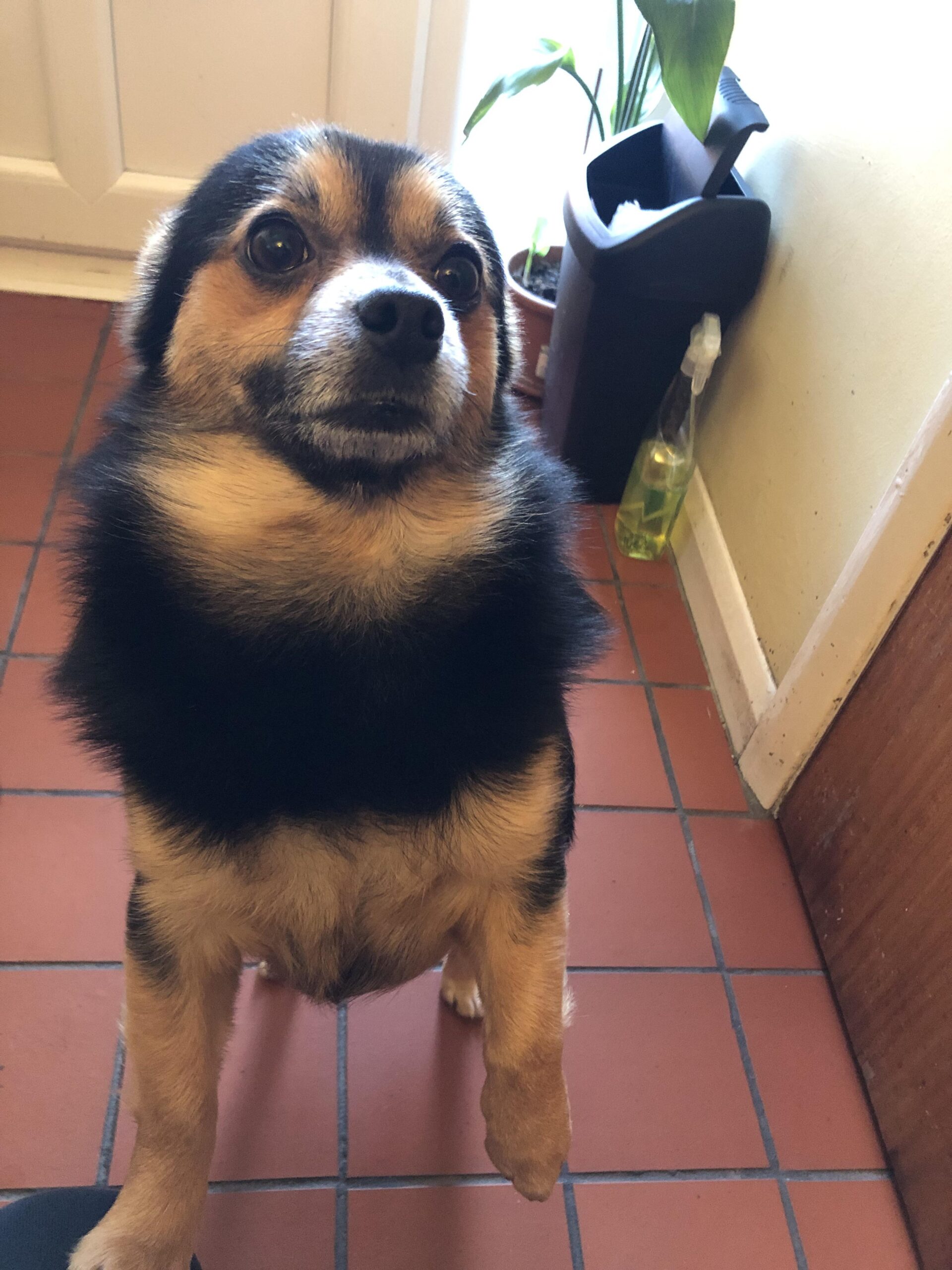
Why ‘No!’ Isn’t Working:
If you’ve been yelling “No!” all day, you’ve probably noticed it doesn’t make a difference. That’s because most “bad” behavior in dogs isn’t about disobedience – it’s a symptom of mental under-stimulation and lack of structure.
Dogs need to engage their minds just as much as their bodies. If they’re not mentally challenged, they’ll find their own outlets – like barking, chewing, or jumping. Instead of reacting to the chaos, try these quick challenges that channel your dog’s energy in the right direction – and lay the groundwork for lasting behavior change.
The 5-Minute Fix – 3 Simple Challenges:
1. Sniffari Walk:
- Take your dog on a short walk where they set the pace. Let them sniff everything – grass, trees, mailboxes – without rushing them.
- Why It Works: Sniffing activates their brain and reduces stress, leaving them calmer and more focused. This small step helps prime them for more advanced training later.
2. Hide-and-Seek Game:
- Hide small treats around the house and let your dog sniff them out. Start easy and gradually make it harder.
- Why It Works: Engages their sense of smell and problem-solving skills, keeping their brain busy and more receptive to structured routines.
3. Puzzle Toy or Lick Mat:
- Fill a puzzle toy (I use this one) with kibble or spread peanut butter on a lick mat. Let your dog work it out for a few minutes.
- Why It Works: Occupies them mentally and satisfies their natural foraging instincts – a key part of keeping them calm, focused, and ready for bigger challenges.
Why Quick Challenges Work So Well:
Short, structured challenges like these are more effective than simply saying “No!” because they tap into your dog’s natural instincts. Mental stimulation exhausts your dog just as much as a long walk or a game of fetch.
But here’s the thing – these quick fixes are just the beginning. Real transformation happens with a structured plan that builds on these small wins and turns them into lasting, reliable behavior.
👉 Want the full transformation? See how to take these 5-minute fixes to the next level – Click Here.
Yelling “No!” all day won’t fix bad behavior, but these quick, structured challenges can. Try one today and see how fast your dog’s focus improves.
And if you’re ready to stop fighting the same battles every day and want a step-by-step plan that creates lasting calm, click here to get started. Your dog – and your sanity – will thank you.
